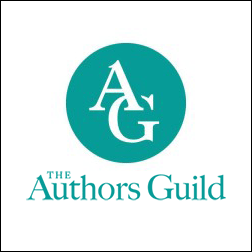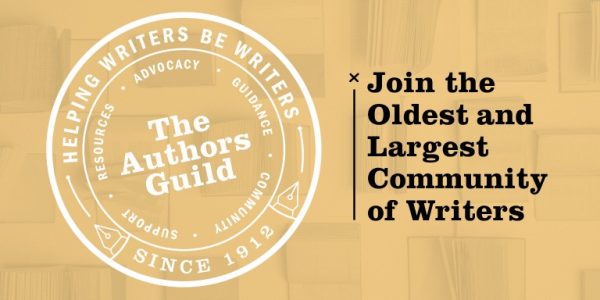Arts Commentary: The Authors Guild’s Modest Proposal
Invariably, these economic realities are barriers to entry into the broader cultural arena for the less-well-heeled among us, sustaining inequity.
By Debra Cash
I have a confession to get off my chest.
I am a writer who does not buy books.
Well, hardly ever. I buy books I know I will need for reference; poetry (because the market is so tiny and I will dip into them forever); books written by friends, typically bought at readings where I have cheered them on; and books that I have already read that I either want to own or give as gifts.
I have lots of reasons, or if you like, excuses. I am a voracious reader, in both paper and digital formats. If I had to buy every one of the books I read – not to mention the magazines! — I would a) be broke b) have to build an addition onto the house to shelve them all.
But I am a power user of my local library. God bless Benjamin Franklin, and digitally-enabled interlibrary loan. Since I got my current library card in 1990, I have taken out 2,583 items (and renewed 755). The librarians at the circulation desk smile when they see me coming.
I should note that I also am a power recommender. Whenever I hear about a book I want to read that is not already in the network system, I suggest my library purchase it. Often they do. And since the books I recommend are often published by small nonprofit and university presses, my recommendations probably expand the availability of these books significantly. At least, that’s my plan.
Thus with happy anticipation I share the news that finally, finally American authors may be able to earn a small royalty each time I – or you – take out a library book.

This week, The Authors Guild wrote to its 9,000 members proposing a national campaign for a Public Lending Right (PLR) in the United States.
As Authors Guild President James Gleick explained, “thirty-five countries—including the United Kingdom, every country in Europe, Canada, Israel, and Australia—support their authors with cash payments from the national government in compensation for the free library lending of their books.” The plan is that libraries nationwide would report aggregate lending statistics for each book. There would be a per-book annual allowance maximum. (In his open letter, Gleick apologizes to J.K. Rowling for putting a cap on her earnings.) Universities, which currently scan portions of books still under copyright for course packets, would be part of the aggregated numbers. That would be significant for academic authors who typically do not earn advances for their work, and whose sales may be limited almost entirely to library collections.
The Guild fought a version of this battle back in the Reagan era and it never got off the ground. But given the changes in underlying technology for data aggregation and the relative ease of distributing proceeds, the time may now be ripe. I hope so.
If you love to read, you should care about this issue. In the past decade, authors’ earnings overall have declined 42%. Median income for full-time (!) authors for all writing-related activities was $20,300 in 2017, up 3% from 2013 but down from the $25,000 median income full-time authors earned in 2009. Much of this has been blamed on the rise of the internet and its “information wants to be free” proponents. E-books generate smaller revenues for publishers and smaller royalty numbers for authors — and are easy to pirate. Amazon’s squeeze on publishers has resulted in both lawsuits and lower payments to authors. The publishing industry itself is highly consolidated, and focused on high-profit-margin best-sellers and books with movie tie-ins. (Michelle Obama, bless her, is doing fine, but mid-list writers are especially endangered).
This problem is not limited to writers. The Authors Guild survey numbers are echoed in other studies of participants in America’s so-called “creative economy,” whose dire numbers are often cushioned by the inclusion of workers at anchor non-profit arts institutions (such as well-endowed museums and symphony orchestras) and commercial design (architecture, technology, game design etc.) Visual artists, performing artists, and literary writers tend to be either very poor, very part time, or depend on significant outside sources of income.
Last fall’s By Artists, For Artists 2018 census report by the Massachusetts Artists Leaders Coalition reflects a slightly lopsided response rate (84.9% of the respondents identified as white — according to the latest available numbers, Massachusetts’ overall population is 72.1% white — and 62% identified as female) , but the findings echoed national trends.

53% identified as professional artists, but said that they needed to augment their creative practice with other paying work including teaching. 29.2 % said they had support from non-work related sources (supported by a spouse, retired, etc.) 17.8% supported themselves full-time, including with competitive grants and fellowships. Of these (mostly white, mostly female artists) 63% of those answering the MALC survey had been engaged in their creative practice for more than 20 years. No wonder one of the hottest topics in the cultural community is the discussion of how to create sustainable arts careers.
Maybe it is acceptable that the vast majority of talented artists and writers cannot commit themselves to these pursuits full time. Maybe most Americans still believe that self-directed creativity is a luxury that the artists themselves should find ways to subsidize. After all, despite all the encouragement for people to “follow their bliss” there is the antithetical saying “that’s why they call it work.” Maybe, artists and writers will always find a way to express their creative impulses if only for their own satisfaction. But invariably, these economic realities are barriers to entry into the broader cultural arena for the less-well-heeled among us, sustaining inequity.
Strategies like the Authors Guild Public Lending Right proposal are small, practical steps towards supporting artists who have already run the obstacle course of structural barriers to share the gifts of their imagination with the rest of us. A Public Lending Right campaign won’t decide, or challenge, who gets to be a writer for a living. It just tries to level the playing field so that when a writer and her reading public touch, the writer has some expectation of being modestly compensated for her labor. This is one way to keep writers writing at the same time that we celebrate the cultural centrality of public libraries whose resources continue to be available to everyone, for free.
Debra Cash, a founding contributor to the Arts Fuse now serving on its Board, is Executive Director of Boston Dance Alliance and a longtime member of the Authors Guild.

Of course, what Debra is talking about here also reflects the sad reality faced by free lance writers — on the arts and other subjects — working for mainstream newspapers, magazines, and radio stations in Boston and elsewhere.
When I started as a free lance writer in Boston back in the ’80s it was possible — with enough dexterity — to survive (pay the rent, etc) writing on the arts. That is no longer true, because opportunities for free lance writers on arts and culture continue to shrink. From my understanding, payment rates for writing on the arts remain about where they were in the ’90s. That is a disgrace. Wealthy mainstream media player are undermining arts writing as surely as Amazon is.
And make no mistake about it — this demeaning treatment reflects what our ‘moguls” really think about the arts and their value — not much.